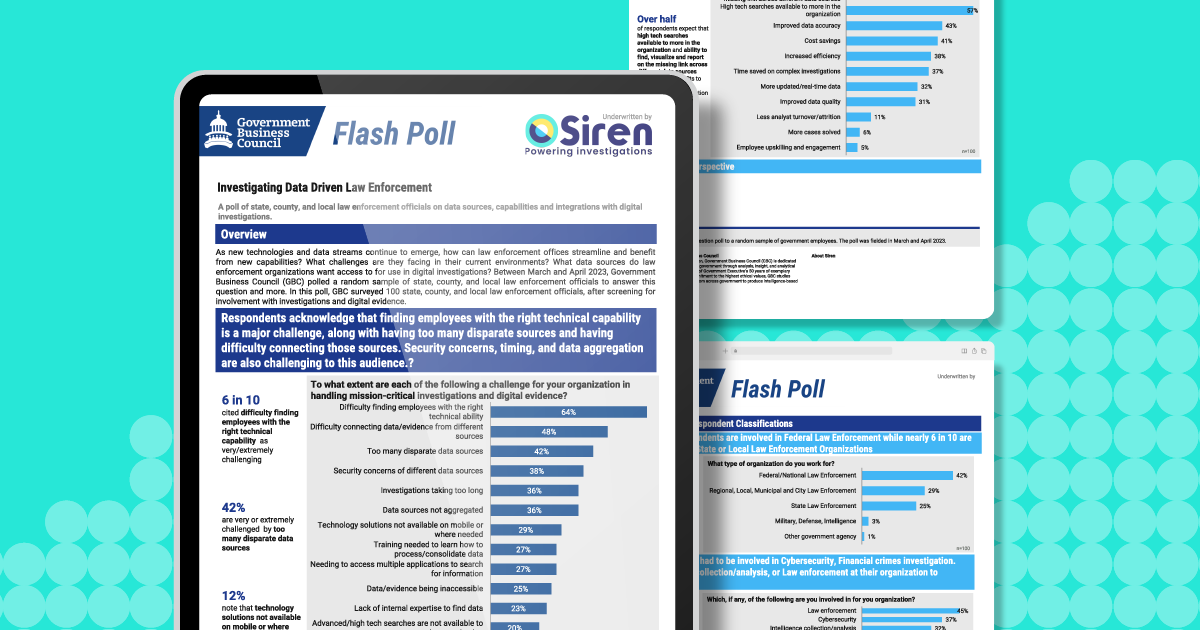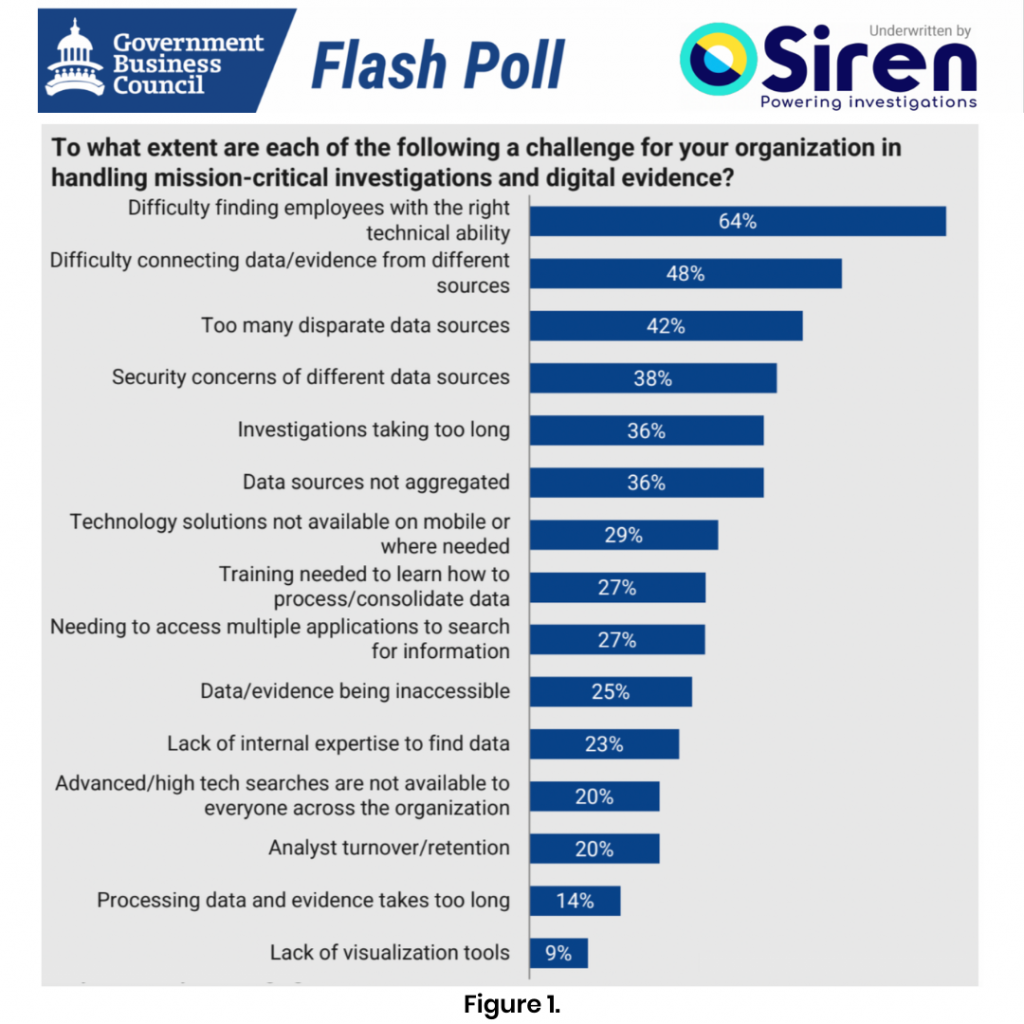
In the dynamic landscape of law enforcement, analysts and investigation teams are expected to respond in near perpetual motion. They must grapple with an array of challenges in conducting mission-critical investigations, often facing seemingly insurmountable volumes of digital evidence. A recent survey conducted by Siren and the Government Business Council (GBC) delves into the key challenges experienced by intelligence teams, shedding light on the obstacles faced by federal, state, county, and local law enforcement officials, as well as their perspectives on integrating new technologies such as AI.
What the results are telling us
From the Siren GBC poll, the most resounding insight was that 6 in 10 law enforcement officials find difficulty in recruiting employees with the necessary technical capabilities deemed very challenging or extremely challenging. At first glance, analyst retention would not be the biggest issue we anticipated but the full story emerges when considering further insights. If you consider that a significant 48% (almost half) of respondents have difficulty connecting data/evidence from different sources, 42% of respondents express being highly challenged by too many disparate data sources, 36% say investigations are taking too long and almost a quarter cite data/evidence being inaccessible it paints the picture of a very challenging environment for an analyst or investigator.
It’s also no wonder there is difficulty finding the right talent when 23% report lack of internal expertise to find data and it certainly reflects complexity in the role when over one quarter (27%) report needing to access multiple applications to search for information. Read more below in Figure 1.

The pain of productivity
Further accentuating the talent scarcity references in Figure 1, the onboarding process proves to be a substantial factor, with more than half (57%) of respondents stating that it takes at least 6 months for a new analyst to become productive. This statistic highlights the need for better training that we see in the field and the need for more intuitive technology to minimise the impact on investigation timelines.
Connecting different data
On average, law enforcement officials juggle a challenging workload, relying on 7-8 different data sources every week for integration, analysis and assessment. The survey identifies a notable and very much leading 72% of respondents who actively use social media monitoring/analysis data during any given week or Open Source Intelligence (OSINT). The following most used data sources were Public Records (52%), Open Web (49%), Financial Intelligence (43%) and in joint fifth position, Case Management and Mobile Forensics (42%).
The newer sources that we expected to see, just about reached the top ten with Blockchain and Crypto in tenth place (32%), just behind Cyber in ninth place (38%) Surprising for me initially was only 18% using Dark Web data, based on our customer conversations and License Plate Reader data at only 24%.
This bore true in the next section which was the most desired data sources and where I personally saw a more accurate description of our customer needs and which emphasizes a gap in law enforcement intelligence data..
In a more predictable spread of results, License Plate Reader Data and Dark Web made the two places at almost one third of respondents. Regionally consolidated data took a tidy third position at 29%. Dark Web took two places in the top five with Dark Web Threat Data coming in, in fourth position at 24%. Blockchain and Crypto, Cyber and Geo-spatial data is desired by approx. 10% of those polled, a data source we see more and more in demand..
The statistics also underscore the challenge of managing and integrating data from various sources. The Flash Poll data reveals a strong desire for additional data sources among law enforcement officials. On average, respondents express a wish for access to three more sources if made available, showcasing an appetite for diverse data streams to enhance their investigative capabilities. The perceived increase in manual, repetitive tasks appears to be trumped by the need to address the data shortfall.
Anticipated benefits of AI
Despite historic reservations, the respondents acknowledge the potential benefits of AI adoption. Over half (57%) expect that high-tech searches and the ability to find, visualise and report on connections in data would be the primary advantages of embracing AI-based solutions. Ease of use of such solutions are anticipated to be a decisive factor in operatives embracing the available technology.
Conclusion
Law enforcement is confronted with the stark realities of managing vast amounts of data in an era of technological advancement. The statistical insights gathered through the GBC survey underscore the pressing need for data access, data connections, centralised technology, effective tools and training for analysts, and an exploration of AI solutions. As organisations navigate this intricate landscape, collaboration with innovative technology providers, like Siren, could be the key to unlocking a more efficient and effective approach to digital investigations.



